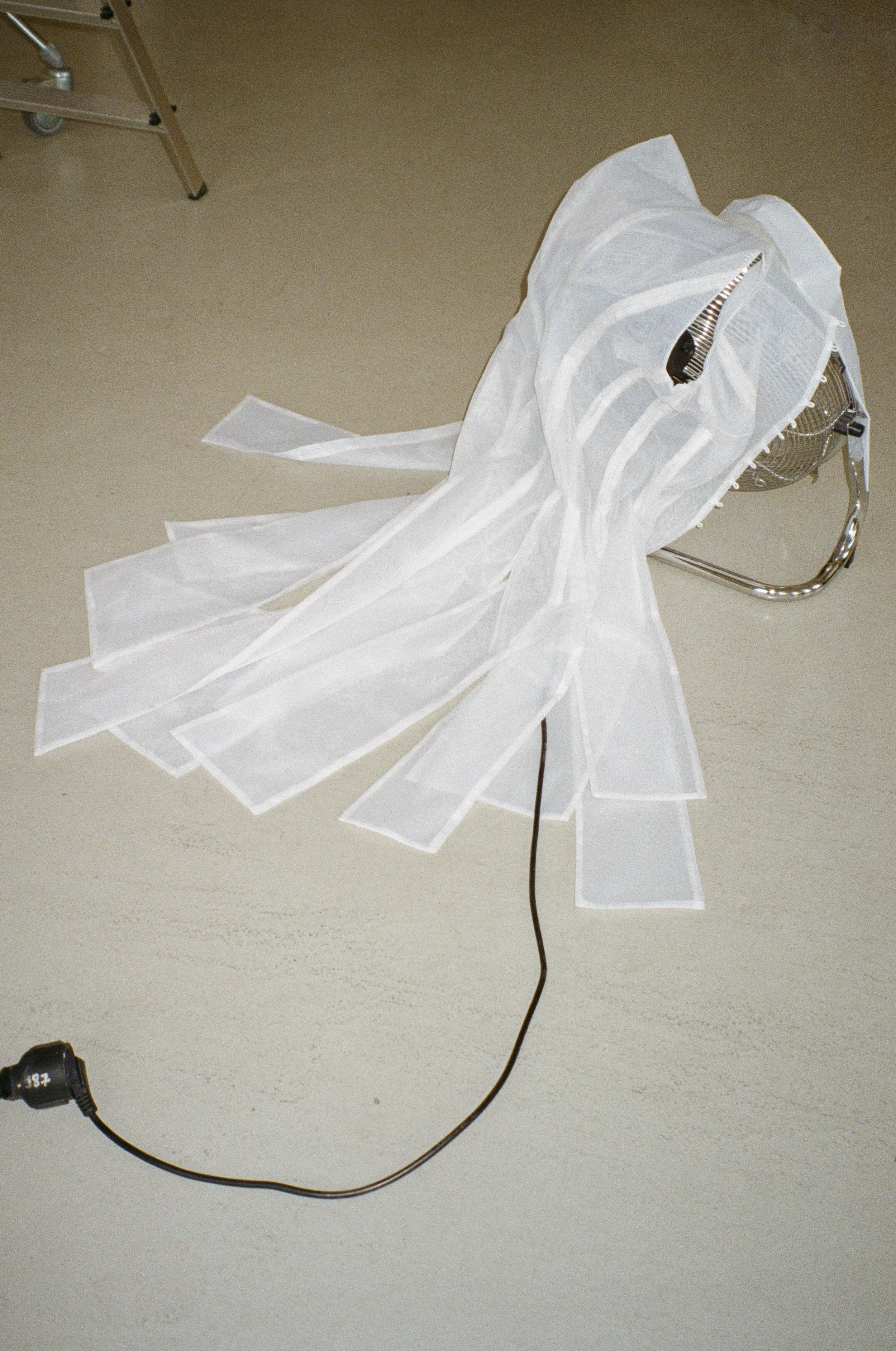
2.5D
(Prozess: von 2D zu 3D)
"The collection was created from shapes and details that emerged in the work process between 2D and 3D.
The special features of the two-dimensional, which are lost in the work on the garment, were revealed on the pieces through direct or indirect exposure.
The impression of the two-dimensional was experimented with, like cut pieces that can be worn on the body."
Beginning
Will there be results without processes?The process is an intermediate stage of our existence in any situation object. It relates to all situations and thoughts. When we look at art or the works of an artist, sometimes we look at the work to see what he is thinking and what process he has developed. It is because we know that many works and efforts are born.
My interest lay in an art form that focuses on the importance of the process itself: “process art”. I thus delved deeper into its concept and characteristics that are related to the topic.
Small details discovered during the intermediate stages of creating this collection became a source of inspiration for its forms. I aimed to develop a pattern that could be worn on the body in its flat state, eliminating the need for darts, pleats, or seam details that are typically required to render a flat pattern three-dimensional.
Elements like linings, which are usually concealed in the production of clothing, along with shoulder pads and elastic bands, took on both functional and decorative roles. To indirectly showcase the sewing process and a multitude of details, I utilized semi-transparent fabrics to create parts that subtly illustrate the completion process within a light, flat pattern.
Additionally, fringe fabrics were used to convey the rough, unfinished nature of the understructure. By pairing a structural silhouette with simple fabrics and combining more complex materials with straightforward shapes, I sought to achieve an overall sense of balance in this women’s collection.
The inherent character of the term “process” served as the driving force behind this collection. I believed that unfinished objects, before the production of a final outcome, could be fascinating starting materials. This led me to question how I might express processes—outside of those that exist solely in their end results—and highlight such alternative processes within the collection.
In this collection, the perception derived from the notion of “process” is placed in direct contrast with the term “result.” The production process of moving from a surface to a physical form is used here as a point of reference, referred to as “2.5D.”
































